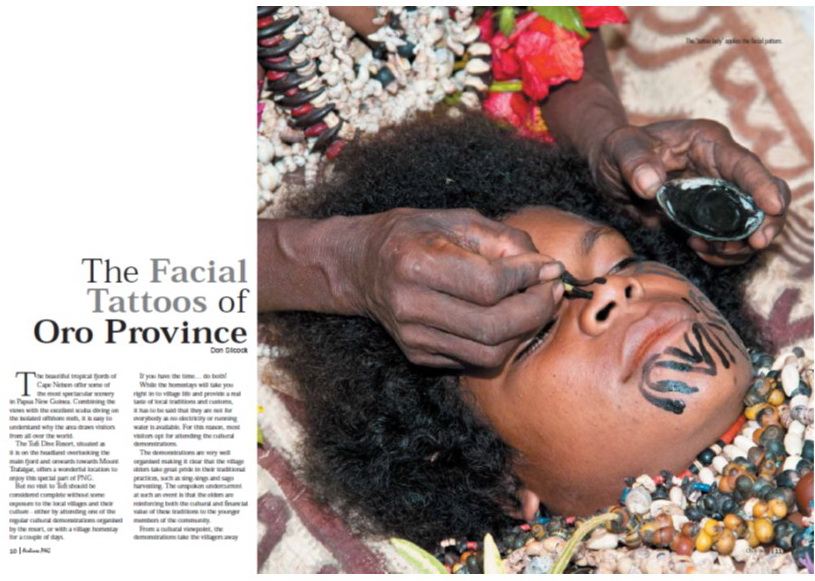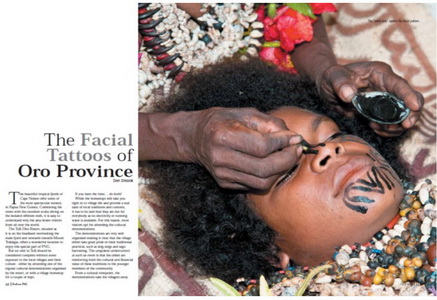One of the most visually intriging things about the local villagers around Tufi in Oro Province are the facial tattoos worn by many of the women – something you would not really be aware of without making the effort to visit them…
Tattoos, and body art in general, have enjoyed a significant renaissance in western society over the last 20 years or so and have become both a badge of honor for those seeking to firmly establish their non-conformity and a trendy fashion accessory to others.
So it was quite fascinating to see them as an integral part of village customs rather than a recent phenomenon.
From an anthropological perspective the practice of using colored pigment to make permanent marks on the skin has been found in almost every major culture in history – for example the Egyptians were using tattoos to decorate themselves around the time of the pyramids and the Chinese are known to have adopted them around 2,000 B.C.
Tattooing was especially prevalent in the South Pacific islands and the word itself is a derivative of the Polynesian/Samoan verb tatu – meaning to strike, and the first recorded use of the word was in a 1796 diary entry by the British explorer Captain James Cook.
However 20th century colonization, and in particular religious missionaries who very much frowned upon the practice, effectively wiped out the practice in many locations.
Of all tattoos, facial ones are the most striking, as they are so permanent and almost impossible to miss.
Facial & body tattooing are reported to have been widely practiced in coastal Papua at the time of first European contact, but quite why it stopped in some areas and continued in others is not clear. Many of these earlier early tattoo patterns were said to have been quite simple, but the “women of Tufi” were known for their elaborate & intricate designs.
The tattoos are made when a girl reaches her full maturity at around 18 years of age and are a very visible indication of that “coming of age” and that she is now ready for marriage.
The process of applying the tattoos is a long & quite painful one involving a technique that is only practiced by certain women in the village who have been taught it by their mothers & grandmothers. The completed facial tattoo can take up to 2 months because it is applied in sections on a daily basis, which gives previously completed areas time to heal.

You can download the full article (600kb) on this link or check out the location pages on Oro Province and Tufi on this link and then follow the links at the bottom of each page.
If you liked this post, please click on one of the links below to Facebook etc as it will help me get the word out about my site – thanks!

